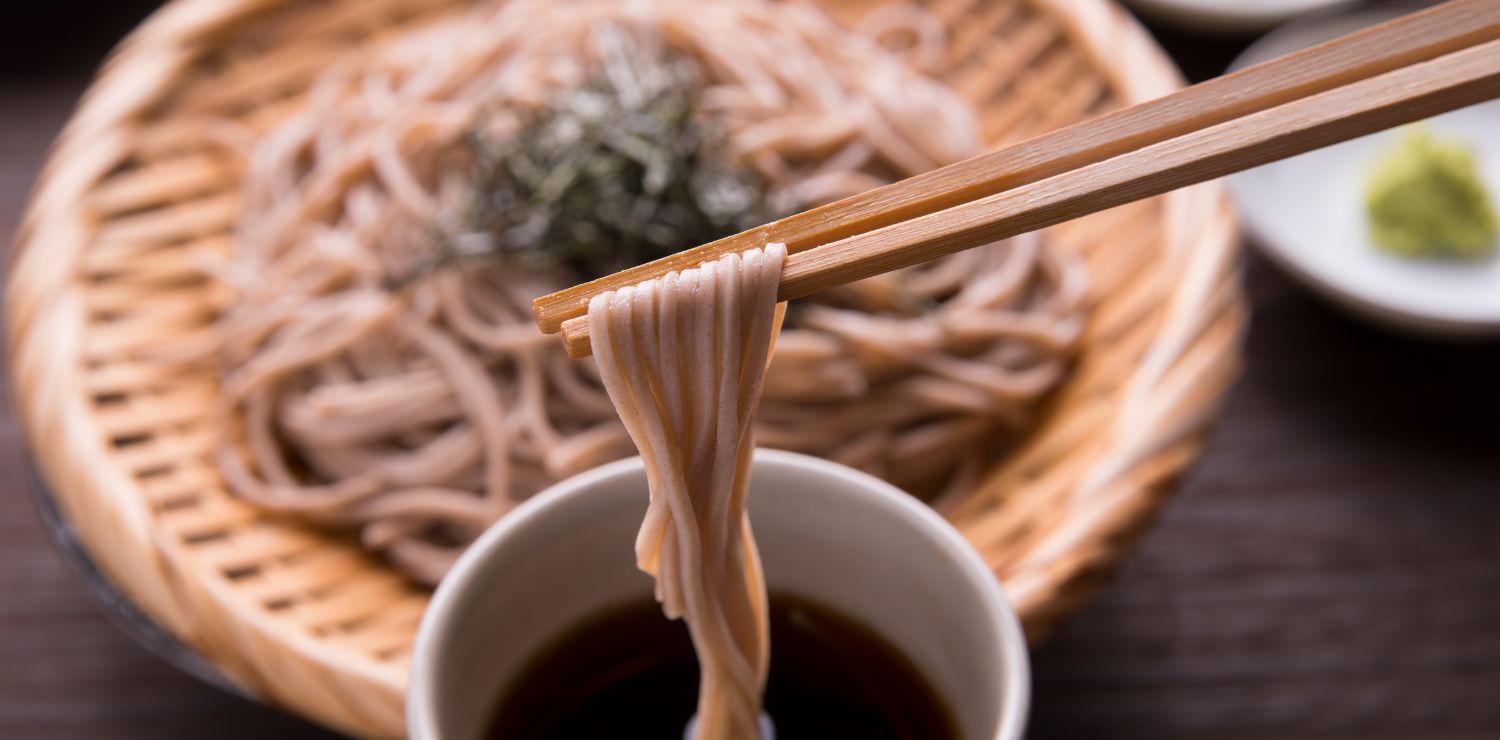The different Japanese culinary specialties
Japanese cuisine is known for being some of the healthiest and most delicious in the world. It consists of a wide variety of dishes, from sushi and ramen to tempura and soba. In this article, we’ll explore some of the most popular Japanese culinary specialties and discover what makes them so tasty and unique.
7. Soba 
Soba is a Japanese specialty of noodles made from buckwheat flour. It is often served cold with a sauce called tsuyu, or hot in a broth called kake soba. Soba is a popular dish in Japan, where it is considered a healthy and filling meal.
Making soba is an art form in Japan. The noodles must be made from a perfectly measured mixture of buckwheat flour and water, then stretched thinly by hand. Fresh soba have a deliciously chewy texture and nutty flavor that are unique to them.
Soba can be topped with a variety of ingredients such as tempura, nori seaweed, fish, or vegetables. Soba is also often accompanied by wasabi, a spicy green paste, and chopped spring onions.
Aside from its delicious flavor, soba is also a source of important nutrients. Buckwheat is rich in protein, fiber, vitamins, and minerals. Soba is also low in fat and calories, making it a healthy choice for health-conscious individuals.
If you are traveling to Japan, be sure to try soba at a restaurant that specializes in this specialty. This way, you can discover the richness of Japanese cuisine and enjoy the delicious flavor of soba.
To prepare soba, we recommend using a knife with a long, thin blade. The utility knife that meets these criteria is also versatile. You will be able to cut several types of food to accompany your soba.
8. Tonkatsu 
Tonkatsu is a Japanese culinary specialty appreciated for its breaded and fried pork meat. The name "Tonkatsu" comes from the contraction of the Japanese words "ton" (pork) and "katsu" (cutlet).
Tonkatsu is typically made with pork cutlets, which are seasoned with salt and pepper, then coated in flour, beaten eggs, and Japanese breadcrumbs (panko). The cutlets are then fried in hot oil until crispy and golden brown.
Tonkatsu is often served with white rice, shredded cabbage, and Tonkatsu sauce, which is a thick brown sauce made with fruits, vegetables, vinegar, soy sauce, and sugar. Some restaurants also serve Tonkatsu with fried eggs, cheese, or other toppings.
Although Tonkatsu is usually made with pork cutlets, there are variations that use other types of meat, such as chicken or beef. It is also possible to find vegetarian or vegan versions, which replace the meat with vegetables or plant-based proteins.
Tonkatsu is a very popular specialty in Japan and many other Asian countries. It is often served in specialty restaurants called "Tonkatsu-ya", but can also be found on the menus of many Japanese restaurants.
To make Tonkatsu, which is a Japanese breaded pork dish, you can use a medium-sized chef's knife or a pork tenderloin knife.
A chef's knife is versatile and can be used to cut vegetables and meat, making it a convenient choice for preparing ingredients for Tonkatsu. Make sure the knife blade is sharp to easily cut through breaded meat.
The benefits for your health
Now that we have detailed the most famous Japanese specialties, we would like to present to you the different benefits that this type of diet can have on your health.
Traditional Japanese dishes are often rich in vegetables, seafood, rice, and other fresh ingredients, making them a healthy and balanced cuisine. Here are some reasons why eating Japanese specialties can be beneficial:
-
Nutrient-rich: Traditional Japanese dishes are often rich in nutrients such as protein, vitamins, and minerals, from ingredients like seafood, vegetables, and rice. These nutrients are essential for maintaining good physical and mental health.
-
Low in fat and calories: Japanese cuisine often uses healthy cooking methods like steaming, grilling, and stir-frying, rather than frying. Additionally, portions are typically smaller, which can help with portion control and reducing calorie intake.
-
Variety of Food: Japanese cuisine offers a wide variety of dishes, from soups and stews to sushi and noodles. This provides the opportunity to eat a wide variety of foods, which is important for getting the different types of essential nutrients.
-
Mental Well-being: In addition to the food itself, Japanese culinary culture advocates a holistic approach to eating. Meals are often presented in an artistic and aesthetically pleasing manner, with particular attention paid to color, texture, and flavor. This can help stimulate the senses and improve mental well-being.
In summary, eating Japanese food can offer a healthy and balanced cuisine that is rich in nutrients, low in fat and calories, and offers a wide variety of dishes. In addition to this, Japanese culinary culture advocates a holistic approach to eating, which can help improve mental well-being.







What are the different Japanese culinary specialties? (Part 2)
What are the most popular healthy foods in Japan?